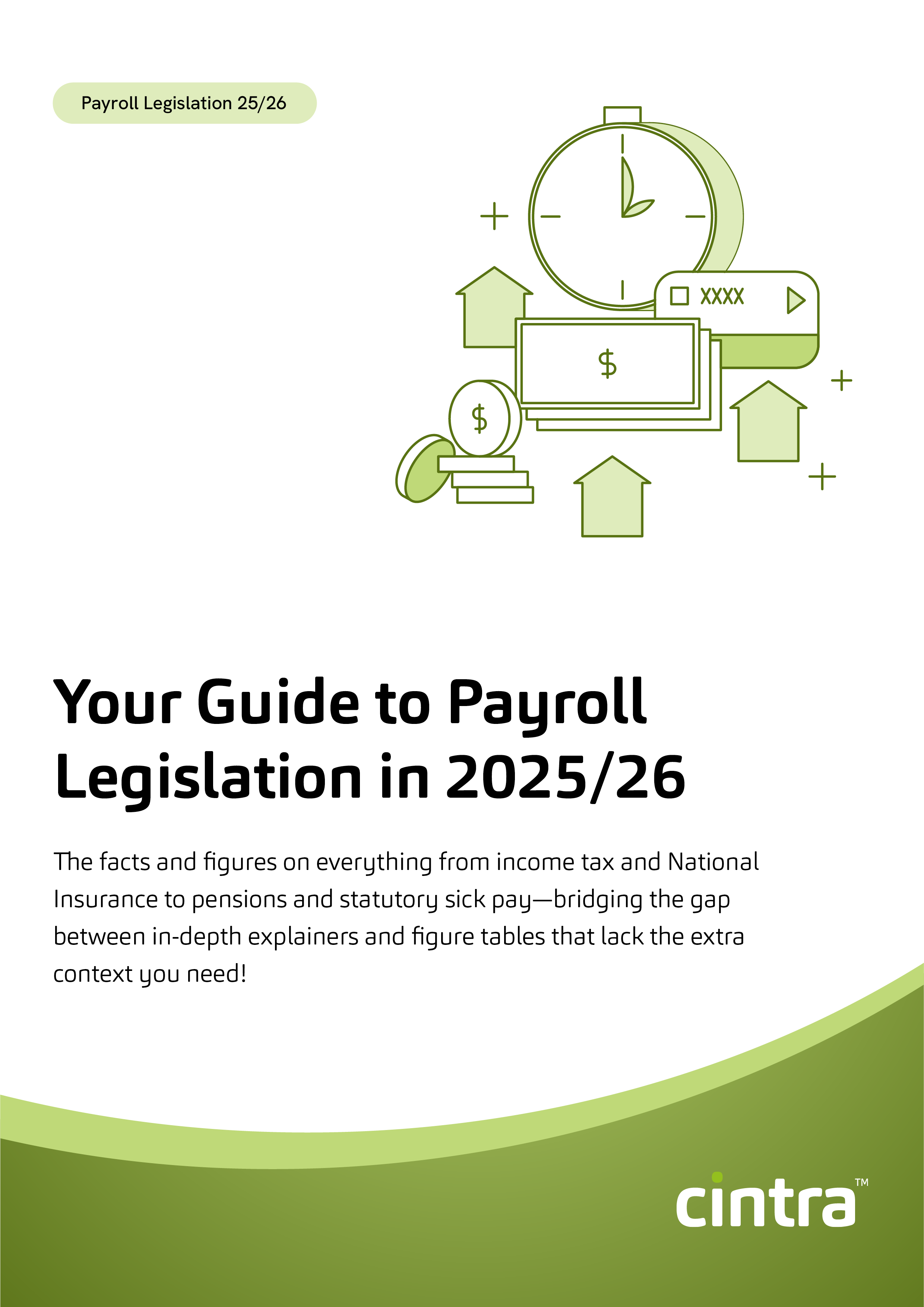Let’s face it, a missed payslip or a delay in payroll is more than just a headache. It can seriously impact employee morale and damage your company’s reputation.
And it’s not just down to simpler scenarios like unexpected absences in your payroll team. Let’s not forget those unexpected challenges like severe weather, natural disasters, or (dare we say it?) a global pandemic. These events can throw everything into chaos.
That’s why having a solid payroll continuity plan is crucial. Planning for the unexpected isn’t optional—it’s a must for keeping your core functions, like payroll, running smoothly.
But every organisation is unique. And how you handle a payroll disruption a month before payday might look very different from how you’d manage the same situation a week before. But with the right plan in place, you can make sure your team gets paid on time, no matter what.
Let’s look at what exactly a payroll continuity plan is, the steps to creating a solid plan, and a handy checklist to keep you on track.
What is a payroll continuity plan?
A payroll continuity plan maps out exactly what to do when different scenarios disrupt your normal payroll operations. It covers things like backup systems, alternative workflows, and clear communication strategies, so you can keep everything running smoothly, even when the unexpected happens.
The idea is simple: it’s all about being prepared. A payroll continuity plan is like a safety net for your payroll process. It’s a system that makes sure your employees get paid on time, no matter what challenges come your way—whether it’s a technical glitch, a natural disaster, or a cyberattack.
Think that it can't happen to you?
If you think you’re immune to the unexpected, think again.
In July 2024, multiple companies reported payroll failures after their software was impacted by a global IT outage.
“We’ve been contacted by numerous clients already today who have been unable to access their payroll software due to the Microsoft outage and others who have been urged to log out with immediate effect.” — Melanie Pizzey, chief executive officer and founder of the Global Payroll Association
Ask yourself: is your payroll continuity plan outdated?
Here are 3 signs your payroll continuity plan needs an update:
- There’s a single point of failure: Do you have a small payroll team, or perhaps just one person in your business managing your payroll? Relying too heavily on a few key people can be risky. If one of them is unavailable, it could cause major disruptions.
- No communication plans: Effective communication is key during a payroll crisis. Do you have a plan in place to keep employees informed about any delays or issues?
- Limited payment options: Relying solely on BACS payments can be risky. Do you have alternative payment methods to make sure your teams get paid on time?
Whether your payroll continuity plan is outdated, incomplete, or non-existent, don’t worry because we’ve got an easy to follow 7-step process to help you out.
7 steps to create your payroll continuity plan
Step 1: Identify critical processes
Pinpoint the core functions of your payroll process, such as data entry, calculations, and payment processing. Make sure you’ve mapped all of these out in an accessible way — it’s important to document your work, but also visualise it. That way, others will have more success processing your payroll if they need to jump in last minute, and you’ll have a better understanding of what your workflow really looks like.
Step 2: Consider alternative payment methods
Imagine your payroll software unexpectedly goes down, or there’s a banking problem; you’ll need to act fast. As you already know (or your employees will waste no time in telling you) delays in payments can cause unnecessary stress for your employees and impact their trust in your organisation.
So, by setting up backup payment processes in advance, such as emergency BACS payments, Faster Payments or using a trusted payroll provider (with the capability to handle everything for you), you can bypass delays and keep everything on track.
Step 3: Create backup processes
Regularly backing up payroll data to secure, offsite locations or reliable cloud-based storage guarantees your data is safe and accessible when you need it most.
Having detailed manual processing guidelines is equally important—they give your team clear, step-by-step instructions for handling payroll manually if your systems go down.
The key is to make these backup processes easily accessible to everyone who needs them, so the team can act quickly when it matters most.
Step 4: Train your team
A well-trained payroll team is your first line of defence against payroll disruptions.
Regular training sessions will keep your payroll team familiar with your contingency plans, so there’s no confusion during a real crisis. Hands-on practice is just as important—it lets your team actually use the backup systems and manual processes. This will help build both their confidence and expertise.
Cross-training is another key step, as it makes sure multiple people can handle critical payroll tasks, reducing the risk of delays if one person is unavailable.
Step 5: Establish communication channels
In the event of a payroll disruption, your employees need to be notified regularly about the status of payroll processing, any delays, and when the issue is expected to be resolved.
Designating specific crisis communication channels, like email, Teams, or the company intranet, streamlines how information is shared and avoids confusion. Make sure your employees know where to find updates and whom to contact with payroll-related concerns—this helps reduce anxiety and shows your team you’re in control, even during challenging times.
Get the latest insights and best practice guides, direct to your inbox.
Step 6: Secure your payroll data
When it comes down to it, keeping your payroll data secure is all about protecting your sensitive employee information. You can do this by using strong security measures like encryption, multi-factor authentication, and limiting access to authorised personnel only. These steps help prevent unauthorised access and cyber threats.
It’s also a good idea to partner with a BACS approved bureau like Cintra, that’s recognised by HMRC and has numerous security accreditations, such as ISO 27001, Payroll Assurance Scheme (PAS), and Cyber Essentials. These certifications show that they follow strict protocols to keep your data safe
Step 7: Test your payroll continuity plan regularly
Conducting regular drills that simulate different scenarios, like system failures or banking disruptions, helps you spot potential weaknesses and refine your plan before a real crisis occurs. It’s a great way to test your team’s preparedness and response times, making sure everyone knows their role and can act quickly. These tests also help pinpoint any gaps or shortcomings in your plan that might otherwise go unnoticed.
You should update your plan annually (or sooner if your organisation, technology, or regulations change) and encourage employee feedback to keep improving your strategies.
Your payroll continuity plan shouldn’t just sit on the shelf collecting dust. It needs to be practised, challenged and updated to suit your needs — which are bound to change over time.
Your payroll continuity plan checklist
| Yes | No | Needs improvement |
We’ve pinpointed the key stakeholders in our payroll team. | □ | □ | □ |
We’ve assessed the potential risks and created a plan to mitigate them. | □ | □ | □ |
We’ve taken a close look at the tools and resources we use for payroll to assess how effectively they’re supporting us. | □ | □ | □ |
We’ve checked that our payroll data is secure (and backed up) and that our employees’ information is protected. | □ | □ | □ |
We have backup payroll systems in place (such as alternative payment methods or an external payroll provider) in case of a disruption. | □ | □ | □ |
We’ve made sure everyone knows their role in the payroll process and what they’re responsible for. | □ | □ | □ |
We’re confident that every aspect of our payroll function is fully compliant. | □ | □ | □ |
We’ve created a clear communication plan which has been shared with all relevant stakeholders. | □ | □ | □ |
Worried about unexpected challenges that could disrupt your payroll continuity plan?
With Cintra’s Emergency Payroll Services, you’ll always have a safety net. Our team of experts are ready to step in and handle any payroll emergency, from unexpected team absences to major system failures. Don’t let a crisis derail your business.

Find out more about Cintra's award-winning outsourced payroll services.
Download your Cintra Source brochure


